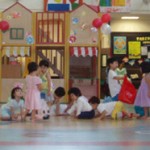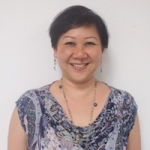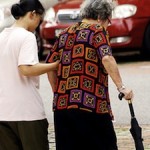The following are excerpts of debates on childcare and pre-school education that took place during the Aug 13, Sept 10 & 11 sittings of Parliament.
CHILDCARE SERVICES
Acting Minister for Community Development, Youth and Sports Chan Chun Sing:
Today, we have 987 child care centres providing close to 90,000 places for infant and child care. There are also 498 kindergartens that provide another 93,000 places for children between the ages of 4 to 6. The overall utilization rate of child care places stands at 84 per cent.

However, in some estates such as Punggol, Jurong West and Woodlands, there is a higher proportion of families with young children. Parents in these estates may encounter difficulties in enrolling their children in their preferred centres.
My Ministry has been focusing our efforts on increasing the number of child care centres in these high demand estates. In Punggol, for example, 20 new centres are being developed, including 10 which will be ready by the end of this year.
The availability of suitable sites is a constraint on our ability to expand more quickly. We have yet to identify all 200 sites we intend to set aside for new child care centres from 2013 to 2018. My Ministry is working closely with HDB to identify the new sites, especially in estates with high demand and in new townships.
Given the numbers required, we will have to explore the use of other spaces, beyond HDB void decks, such as community centres, sports complexes, office buildings, retail malls and vacant state buildings for setting up child care centres.
The sites available for tender by both non-profit and private child care centres are progressively made known on MCYS Child Care Link website. In determining the allocation of sites for non-profit centres and for-profit centres, MCYS takes into account the resident and housing type profiles, current mix of centres and views of the community and community leaders. For HDB void deck sites, our primary consideration is to ensure that such sites are used to provide affordable childcare options.
There are currently 176 centres run by for-profits in HDB void decks which make up about 37 per cent of all HDB void deck centres. There are another 52 centres in government buildings including hospitals. Private operators on such sites pay market rentals which vary from site to site.
Today there are 22 child care centres located in the central business district and 241 centres located in commercial premises, government or other buildings. These centres make up about 27 per cent of all centres and cater to parents who prefer a centre in the vicinity of their workplace.
The Government currently provides grants to organizations and developers that are keen to set up workplace childcare centres. We provide capital grants for the purchase of furnishings and equipment for the centre as well as development grants for centres set up in government buildings.
Private commercial developers can also tap on URAs Community and Sports Facilities Scheme. Developers receive additional gross floor area (GFA) of up to 2000 square metres of retail space by integrating community facilities run by not-for profit organizations in their development. Child care is one of the approved uses under the scheme.
We agree more can be done to encourage the development of workplace child care centres. We welcome suggestions raised by Members in our ongoing policy review.
In the area of quality, some Members have asked if there are sufficient qualified early childhood educators. There are currently about 11,000 child care teachers, educarers and centre supervisors in the sector. More than 90 per cent of childcare teachers for the 4 to 6 age group are diploma trained or undergoing the diploma in early childhood.
My Ministry works closely with various partners to attract, develop and retain teachers and other personnel for the sector. For example, we work with the Workforce Development Agency (WDA) and training providers to develop a pipeline of new and qualified teachers. This year, WDA will appoint two more training agencies as programme partners, increasing the training capacity for the sector.
The Government also offers scholarships in early childhood studies for both new and existing teachers. We recently introduced a Good Employers toolkit and conducted workshops on good human resource practices in the sector to improve staff retention.
We have made some progress. About 3,500 new teachers joined the sector in 2011, increasing total manpower by 25 per cent. In the same year, the attrition rate fell from 15 to 13 per cent. We will continue to monitor the manpower situation closely.
The Government supports parents through various subsidies to defray the cost of child care. We provide a full day universal child care subsidy for working mothers of up to $300 per month and infant care subsidy of up to $600 per month per child. Parents can also utilize funds from the Child Development Account (CDA) under the Baby Bonus scheme to offset the cost of child care fees. There are also financial assistance schemes under ComCare for child care for families with household income of up to $3,500 or per capita income of $875 and below.
In the financial year 2011, a total of $606.8 million was spent on child care services, kindergartens, the Baby Bonus scheme and other measures to support the development of the early childhood sector. This is about 0.19 per cent of our GDP.
In the same year, MCYS spent $28.9 million in kindergarten and child care subsidies under ComCare for preschoolers from lower-income families. We have also spent $10.3 million to support preschoolers with special needs.
PRE-SCHOOL EDUCATION
Minister for Education Heng Swee Keat:
MOE recognises the importance of pre-school education. A major review of pre-school education was conducted in 2008 by the MOE-MCYS Joint Steering Committee. Arising from the review, we have taken steps to improve the quality, affordability, and accessibility of pre-school education in Singapore.
We are raising quality through a three-pronged strategy of raising teacher quality, programme quality and centre quality.
First, to improve teacher quality, MOE and MCYS raised the minimum professional and academic qualifications required of pre-school teachers. From January 2009, all new pre-school teachers will need to have a minimum of 5 GCE O level credits and a minimum professional qualification of a Diploma in Early Childhood care and Education Teaching.
We have also invested in the professional development of our pre-school teachers through various bursaries, scholarships and teaching awards, and provided subsidised training for continuing professional development.
Second, MOE is strengthening programme quality by developing and disseminating curriculum resources to all pre-schools. We are currently updating our Kindergarten Curriculum Framework and will distribute the revised framework to all pre-schools by the second half of 2012.
Additionally, both MOE and MCYS extend funding support to pre-schools, such as the Innovation Grant to encourage a culture of innovation in the delivery of programmes. The two ministries also regularly organise professional sharing platforms such as the Kindergarten Conference, the Kindergarten Learning Forum, and Child Care Seminar to promote professional development and sharing of best practices.
Third, MOE is raising centre quality through the Singapore Pre-school Accreditation Framework (SPARK), implemented in 2011 to support pre-schools in their efforts to improve the teaching and learning, administration and management processes.
SPARK drives continuous improvement and provides an indicator of quality for parents making choices on pre-school. So far, 115 pre-schools have received the SPARK certification.
To ensure that pre-school education remains affordable, the Government has made available a range of subsidies, including universal childcare subsidies and additional financial assistance for children from lower-income families.
The eligible income criterion for ComCare childcare and kindergarten subsidies was revised upwards from $1800 to $3500 with effect from 1 April 2011. As a result, the number of beneficiaries has increased by 25 per cent. These subsidies apply regardless of whether a child attends kindergarten or childcare, and ensures no child is denied access to pre-school because of his familys financial circumstances.
MOE and MCYS will continue to look into the issue of affordability of pre-school education, and consider if the current range of subsidies is adequate. While we have not made pre-school compulsory, the access to pre-school education is very high 99 per cent of our recent P1 cohort attended at least one year of pre-school. This is higher than some countries where pre-school is compulsory.
We have achieved this through a dedicated focus of reaching out to children not enrolled in pre-school. An inter-agency committee, helmed by MOE with representatives from MCYS, Peoples Association and PCF Headquarters, identifies and reaches out to children not attending pre-school. We are also assisted by grassroots leaders and social workers who visit needy families, and assist their children with pre-school enrolment.
The early years are crucial for a childs holistic development and for laying a strong foundation for lifelong learning. While MOE does not prescribe a curriculum for pre-schools, teaching and learning in pre-schools are guided by MOEs Kindergarten Curriculum Framework and Guide in designing programmes that are developmentally appropriate for children aged 4 to 6.
Parents are naturally concerned about their childs readiness for primary school. However, developmental and education experts warn against over-teaching pre-school children and the potential detrimental impact on the child. Such an approach ignores the spectrum of potential and pace of development which exists normally in children of preschool ages and should be discouraged.
MOE is currently refreshing the Kindergarten Curriculum Framework to take into account recent research findings in child development and will also articulate the core competencies a child should possess, such as in the areas of Language and Literacy and Numeracy, at the end of pre-school education and as they enter primary school. The refreshed framework will be disseminated to all pre-schools, and made available to the public by the end of this year.
MOE and MCYS work closely on policies and practices for the pre-school sector, to raise the quality of the pre-school sector and to enhance the professional development of pre-school educators. For example, SPARK applies to both kindergartens and child care centres.
Similarly, professional qualification requirements and professional development routes developed by MOE apply to both kindergarten and childcare teachers. MOE and MCYS will study how best the government can oversee and support the sector. More can be done, including in the other areas of improvement highlighted by the studies commissioned by the Lien Foundation. The studies are timely and add to the feedback we have been gathering. The Government will consolidate and study all feedback carefully, and see what further measures are needed to raise the quality of pre-school education.
TRANSFORMING THE CHILDCARE SECTOR
Non-Constituency Member of Parliament Yee Jenn Jong:
Childcare centres in Singapore first started in the 1970s. Back then, there were only a few private and non-profit operators in the business. Children between the age of four to six could be enrolled in childcare centres or kindergartens. However, because kindergarten school fees were much lower, kindergartens became the primary choice for parents looking for preschool education for their children.
Then in the 1990s, childcare centres started to flourish because more double-income families appeared. In the past 10 years, the childcare industry has expanded at a very fast pace. Childcare centres became a common sight at the workplace.
In the beginning of the year 2004, there were 651 childcare centres. This number has increased to 987 by June this year. During this period, the number of children who enrolled in childcare centres increased from 38,000 to more than 75,000. So, you see more and more childcare centres in housing estates. There is a lot of demand for childcare centres in housing estates. In fact, the demand for childcare centres outstrip supply.
Inclusive of children under infant care, childcare centres currently take care of 90,000 children, this number is similar to 93,000 who are enrolled in kindergartens. Enrolment for kindergartens have been decreasing steadily over the past few years. If this trend persist, there will be more children enrolled in childcare centres instead of kindergartens. In fact, childcare centres now play a very important role in our society.
At the start of 2004, the average fee for full-day childcare services was $572, but this has increased to $699 by the end of 2008. Currently, the average fee is $831.
In 2008, the Government increased childcare subsidies. The monthly subsidy for full-day childcare services increased from $150 to $300. Now, based on the above statistics, we can see that average fees for childcare services has increased in tandem with the increase in Government subsidies.
If we were to look at the fees of private childcare centres, I am sure that the fees have increased much more than the increase in Government subsidies, because their labour and manpower costs have gone up rapidly. Today, an article in Lianhe Zaobao reported on the rental woes faced by private operators of childcare centres.
According to a recent survey by Lien Foundation, 90 per cent of users of childcare services feel that preschool education is expensive or very expensive. The survey also pointed to a serious problem: childcare fees are so high that it is deterring many married couples from having more children.
Is it possible for us to have good, affordable childcare services for the masses? I believe it is possible.
In the childcare industry, there are many private operators, most with one or a few centres, while several run chain stores. We also have non-profit operators, dominated by NTUC First Campus and PCF Sparkletots. They are called Anchor Operators, so determined after an exercise in 2009. The criteria used included: (a) $5 million paid-up capital, (b) non-profit, and (c) without any religious or racial affiliation.
Anchor Operators function mostly from HDB void decks, at rents of between $2 and $4 per square metre, as disclosed by MCYS. For a typical centre of 400-500 sqm, this means monthly rent of $1,000 onwards. They receive generous set-up and furnishing grants for each new centre. In addition, they get recurrent grants for manpower development and learning programmes, estimated to go into $30 million per year.
MCYS publishes upcoming new centres from HDB and SLA. From its website, I see just a few centres available to private and non-profit operators. Yet at the opening of the 100th NTUC centre in October last year, NTUC declared it will open 50 new centres over the next two years, which is one every fortnight.
PCF too had been growing just as rapidly in the last three years. Just five years ago, PCF was a small childcare player. Today, it is number two with 90 centres, just behind NTUC. The many new centres by these two operators do not match the small number of published centres available to non profit operators. Are they given unpublished quotas?
We are told that the role of non-profit and Anchor Operators is to bring cost down while maintaining quality. There is no magic in non-profit or in Anchor Operators. The lower fees they provide can be matched by private operators. I will now demonstrate that if private operators get the same benefits as non-profit and indeed Anchor Operators, they had shown that they could match the fees of non-profit peers.
Financial modelling for childcare is straightforward. The main start-up cost is renovation, fitting out, and investment in resources. Set-up cost can be high, running into a few hundred thousand dollars per centre.
In a typical centre paying competitive rents, manpower and rent account for some 80 per cent of all ongoing operating costs. Private operators function from landed houses, commercial and Government-owned buildings or purpose-built HDB void decks.
Tenancy is often subjected to bidding. When tenancy expires, there is usually open bidding or adjustments to market rent. Competition has caused rents to be in excess of $10,000 to even as high as over $40,000 per month in recent tenders.
Anchor Operators get choice new sites regularly at highly subsidised rents. They receive start-up, furnishing, maintenance and recurrent grants. These give them huge operating benefits over competitors.
The difference in monthly rent between non-profit and private operators can be $15,000 per month or more. Divide $15,000 by a typical centre enrolment of 75 children. That works out to around $200 cost advantage per child per month. With setup grants, Anchor Operators need to provide less for amortisation of investments. They get ongoing grants to defray costs.
Yet with these cost advantages, non-profit’s median fee is currently just two hundred over dollars lower than that of private operators. We can find private centres whose fees are not much higher than that of the Anchors. Are the Anchors, with these cost advantages, really doing enough to keep fees affordable?
There is other industry data to support my claim. In a parliamentary reply this year, MCYS disclosed that EtonHouse, a premium operator whose fee is $1,500 per month, charges only $728 at its Hampton Preschool. The centre is a collaboration with PCF. PCF secured the site at low rent, and can enjoy other grants. EtonHouse is responsible for programme delivery, set-up and pedagogy.
According to a speech by Mr Wong Kan Seng in 2009, EtonHouse manages the centre and was selected because PCF wanted to work with a private operator who could deliver high quality programmes. While there could be variations in operations compared to a typical EtonHouse centre, the fact is, EtonHouse could deliver high quality programmes at less than half of its usual fees when it operates in a void deck that enjoys subsidised rents and grants.
In the 1990s, Government buildings started to provide for workplace childcare. There was an interesting practice then to charge $1 or other token monthly rent for purpose-built childcare facilities which catered to children of staff working in the building. Bids were called.
I noted that in open competition, these sites went to established private players whose own centres charged in the mid to upper price range. The condition for low rent then was that the fees for children of staff in the buildings must be kept low. Premium private operators could match the prevailing fees of non-profit operators.
Today, costs are escalating due mainly to rent and manpower. Manpower cost affects all in the industry. Anchors with recurrent grants can better retain staff, head-hunt from other centres and deal with rising costs. Rent is steadily rising in our competitive market. This has caused fees to rise.
Out of pocket payments by parents in many private centres today are higher than before subsidies were increased in 2008. MCYS has no control over fees. Centres just need to give ample notice to parents, which MCYS recommends as three months, and then fees will go up.
The Government has announced new measures for the industry. While they may be initiated with good intent, I fear it could end up creating more unfair competition, destroying the diversity and innovation in our current system.
I have a proposal to bring costs down while pushing for quality and diversity Childcare as a public good with private partnership through contestability.
I noted that in delivering public goods such as transport, the Government has pumped billions in rail and bus investments without expecting payback from private operators or charging infrastructure at market rent to them. We are told this is to bring the cost of public transport to a level that the public can accept.
If we wish for young working couples to be able to afford childcare and be encouraged to have more children, then we have a case to use a public good’s approach for childcare.
Government can build and lease out centres at managed low rent. All existing centres can come under this model. Based on answers in Parliament, there are 290 void deck centres for non-profit and 176 for private operators in void decks and JTC buildings, and another 52 in Government buildings.
That is 518 centres, roughly 52.4 per cent of all childcare in Singapore. With 200 more new centres to be built mostly in Government-controlled spaces, the share of sites under Government control will rise.
Old schools, disused community centres and other SLA spaces can be purpose-built by the Government into mega childcare facilities, even housing different operators under one roof. Childcare generally should be within two to three kilometres of workplaces or homes.
Many small void decks in new flats are not ideal for childcare, limiting options in new towns. We can have mega childcare sites as long as we ensure it is within easy access by parents, with roads and parking well planned.
We can utilise unused land parcels next to primary schools. There are small plots around some primary schools which are not big enough for meaningful commercial projects. We can tap on the infrastructure of the schools to add new pre-school facilities. This will make use of unutilised space, save on infrastructure costs and cultivate exchange between primary school and pre-school.
The Government can negotiate as main tenant with large private landlords for sites as a bloc to supplement their bank of childcare sites. It can work with property developers who get additional Floor Area when they set aside pre-school space at cheap rents and let the Government use the space for any type of operators. We should actively pursue all options to increase the State’s child care bank to cater to the mass market.
How do we allocate these centres? Rather than have more Anchors, I have another suggestion. The Anchor concept has skewed the market. It is like giving a boxer super gloves and energy boosters while tying the hands of the competitor and asking them to fight each other. The stated objective of the Anchor Operators was to develop childcare operators that would set the benchmark for quality and affordable childcare services.
It may have allowed Anchor Operators to achieve higher quality as they get resources, economy of scale, and certainty of their leases. Is it fair to expect other operators to keep pace? Other operators get little or no State funding. They hesitate to invest, worried if others will outbid them for their centres at each renewal, which will wipe out sunk investment. New HDB sites are so few compared to unannounced sites for Anchors. Anchor Operators could lure their staff away with scholarships. Instead of encouraging other operators to step up, it can cause some to think short term and extract as much out of their investment while they can.
We can apply contestability. Contest clusters of sites openly based on concept rather than on rent. This was done before, when Government building sites charged token rent and selection was on other factors such as quality and fees.
There is no need for a one-time selection of new Anchor which will only strengthen a few selected ones and weaken everyone else. Worst, it may become impossible for new operators to enter the market, killing off future innovation. We need active and fair competition to raise standards and to continuously drive innovation.
Recurrent and other grants should apply to all qualifying participants as long as they meet strict selection criteria on fees and quality. There should be no differentiation between private and non profit operators. We already know what the current Anchors can do with the support they had been given.
Why have we been limiting ourselves to think only selected non-profit players can bring cost down? Let us open up and see how all others, including private operators, can benefit from that in terms of price and quality, if given similar support. I believe fair competition may even force current Anchor Operators to better their pricing, ultimately benefiting consumers.
New operators can surface from time to time. Small operators may band together into economic groups to better compete. Contestability will drive diversity and quality. Operators cannot increase fees without approval. The Government will regain control over the fee process to ensure affordability.
Government can better direct its key programmes. MCYS had found it hard to get private operators to go along with some of its programmes, such as SPARK. Last month, we were told only 115 pre-schools had attained SPARK accreditation, of which just 39 were private operators. This is way, way below the target of 85 per cent of all centres to be SPARK-tested by 2013, a figure established by Minister of State for Education, Mr Masagos in November 2010. We can allow only SPARK-accredited operators to contest these sites.
There may not even be a need for state-run preschools. The call for nationalisation was made by many frustrated with differing standards and high costs. We can improve quality even at the low-cost segment by having a critical mass of centres available in this public-good model, and the state regulates to steer quality and pricing.
It can designate some centres for the low-income group by packaging centres for different market segments in each tender exercise. While this proposal is in the context of childcare, it can also be used for kindergartens.
In summary, I am calling for childcare to be a public good with fair contestability of sites at managed rents for all types of operators, with tighter control of fees and quality by the state. This will benefit all Singaporeans as fees will drop industry-wide while preserving diversity and driving up quality and innovation. I hope the Government can carefully consider this proposal.
Minister of State for Community Development, Youth and Sports Halimah Yacob:
Over the last few years, we have invested in significant initiatives to provide parents with more accessible, affordable and quality childcare and kindergarten options.
Through the Child Care Masterplan introduced in 2008, we have improved accessibility. More than 200 new childcare centres were set up. Today, we have close to 1,000 childcare centres across the island, providing up to 90,000 places.
This is an increase of about 40 per cent over four years. Over the next five years, we will be providing another 20,000 childcare places to meet the increased demand. To make childcare more affordable, we raised the universal childcare subsidy in 2008 from $150 to $300.
More recently, we have enhanced childcare financial assistance for families with household incomes up to $3,500 and we introduced a per capita income criterion to allow larger families to receive more subsidies. Parents can also utilise funds from the Child Development Account (CDA), for which Government provides a one-for-one matching grant, to offset the cost of child care fees.
With this combination of subsidies and financial assistance, a family earning $2,000 a month for example, may pay as low as $15 per month out of pocket at a typical childcare centre at a HDB estate.
Mr Yees reference to the trend in average fees in the industry may not provide a very good picture of affordability for the majority of low- and middle-income families since average fees are skewed by high-end centres.
We raised subsidies by $150 in 2008, the industry median fee for childcare increased by $120. So, parents are still $30 better off. If they use a centre in the HDB heartlands, they are about $80 better off even after taking into account fees over the years. For the lower income groups, they would have received additional subsidies.
Nonetheless, we acknowledge that families face rising costs, and there is room to do more. There is always reason for us to do more, whether in terms of accessibility, affordability or quality. This is not a sector where we want to say we have reached the peak.
This is a sector where we want to seek continuous improvement, just like the education sector. We will look into ways to make childcare and infant care more affordable for low- and middle-income households.
Let me come to the issue of quality. We raised the qualification requirements for kindergarten-level teachers and edu-carers of younger children. We worked with training providers to increase training courses and places. Generous scholarships and bursaries were given out. Today, more than 80 per cent of childcare centres have at least three out of four of their N2, K1 and K2 teachers with a diploma in pre-school education.
We have also extended curriculum and systems support to pre-school providers. MCYS Early Years Development Framework, together with MOEs Kindergarten Curriculum Framework, provides guidance to centres on designing quality programmes. MOEs Singapore Pre-school Accreditation Framework (SPARK) also helps centres evaluate and improve the quality of kindergarten-level programmes.
Mr Yee has raised some concerns on our Anchor Operator scheme. Let me also take this opportunity to explain to the House how the Government extends support to the different operators in the childcare sector. Broadly, we adopt a three-pronged approach as follows.
First, significant support goes towards the entire sector as a whole. We support all centres with measures to help raise quality and to develop a steady supply of trained manpower. These come in the form of programme and curriculum guidelines, quality standards, subsidised consultancy, training and scholarships, and resources on good employment practices.
At the second level, we provide additional support to non-profit operators. We do this because non-profit operators have a social mission to provide affordable services to families and children, and in particularly extra help to those who have greater financial or other needs.
This is in line with our objective of greater support for these groups of children and families. We do this through providing development grants to non-profit operators to set up centres in the HDB heartlands. Rental rates for these sites are also subsidised so that the operators can offer more affordable fees.
Third, we have an Anchor Operator Scheme where we provide additional support to non-profits who meet additional criteria and who commit to stringent terms and conditions. The additional support is to enable them to significantly increase childcare places that are both of good quality and affordability for the mass market, that is, those from low-to middle-income families.
The basic entry criteria to the scheme are made known. In addition to development grants and subsidised rental rates, Anchor Operators also receive a recurrent grant to defray the costs of recruiting and developing good quality teachers for their new centres.
In other words, whoever wants to take advantage of the Anchor Operator scheme and wants to receive additional grants and support, is entitled to do so. It is open to them, even if you have a commercial entity who feels that it wants to do that, can always set up a non-profit arm. And if they qualify and fulfil the conditions, they are also eligible to become an Anchor Operator and receive the additional support from the Government.
In return, Anchor Operators are held to higher quality targets than the rest of the sector, and must commit to delivering their childcare programmes at affordable fees. Anchor Operators also need to be inclusive and secular, not catering to any one ethnic or religious group. They must also be financially able to sustain their operations and achieve sufficient scale, in order to meet Governments objectives over the long term.
Since the scheme was introduced in 2009, there are now close to 200 childcare centres operated by the two Anchor Operators across the island. This is a three-fold increase and many of the centres are spread out across all the HDB estates. All Anchor Operators charge fees that are below the market median. Few of these would have been possible without the scheme.
Overall, this tiered approach has enabled us to improve the childcare landscape significantly. Today, we have a diverse range of operators, providing parents with choices. At the same time, we have a strong core of non-profit providers offering affordable, good quality services. We want to grow this core over time so that we can reach out to more low-and middle-income families, and ensure no child is denied access to good quality childcare.
Moving forward, the Implementation Committee for Enhancing Pre-school Education is reviewing the design of the scheme. We intend to expand the coverage of the scheme by attracting and admitting more operators so as to bring benefits to more parents and children. That is one point that Mr Yee raised, and that is with regards to the fact of whether having Anchor Operators affects the ability of the commercial operators to grow.
Based on the statistics that we have, we have seen growth in both the Anchor Operator market, as well as growth in the commercial sector. But the Anchor Operator scheme is very important because we are using tax payers money. We have to make sure that we award it to those who are non-profit and provide a public service, who are able to contain fees and yet at the same time provide good quality childcare services to the public, particularly the low- and middle-income families.
Notwithstanding these improvements, we know we can always do better. And we want to do better – so as to provide even better support to parents and to better prepare our children for the future.
Often, however, feedback and views, including those from experts, are mixed. Just over the past few weeks, we can see that some Singaporeans are of the view that the Government should nationalise and standardise the provision of pre-school, while others prefer a diversity of programmes and players so that parents have more choices. Some parents want more structured curriculum and programmes, while others feel quite the opposite.
There is no unanimous agreement on what is the best approach for Singapore. It is not an easy issue with clear solutions. We will consider the diverse feedback we receive and study other systems. We will decide based on our circumstances and the stage of development of the sector, and especially the interest and well-being of our children.
MERGING OVERSIGHT OF CHILDCARE AND PRE-SCHOOL EDUCATION
Chan Chun Sing:
While the pre-school sector is currently overseen by two Ministries, MOE and MCYS have coordinated closely in key policy areas, especially at the kindergarten level. These include requiring the same qualifications for principals and teachers teaching children aged four to six, and adopting the Singapore Pre-school Accreditation Framework (SPARK) for both kindergartens and childcare centres.
As recently announced, the Government will be setting up a new statutory board to oversee early childhood education and care for pre-school children across the age ranges. The statutory board will be responsible for the development and regulation of the pre-school sector, covering both kindergartens and childcare centres. It will serve as a single focal point to drive quality, accessibility and affordability improvements in the sector.
MOE and the new Ministry of Social and Family Development will work closely together on the formation of the new statutory board. More details will be announced in due course.
Read the the full transcripts here, here and here.








 I love kids. I just don’t really want one of my own yet. I couldn’t even trust myself to commit to cat-sit for my friend.
I love kids. I just don’t really want one of my own yet. I couldn’t even trust myself to commit to cat-sit for my friend.



